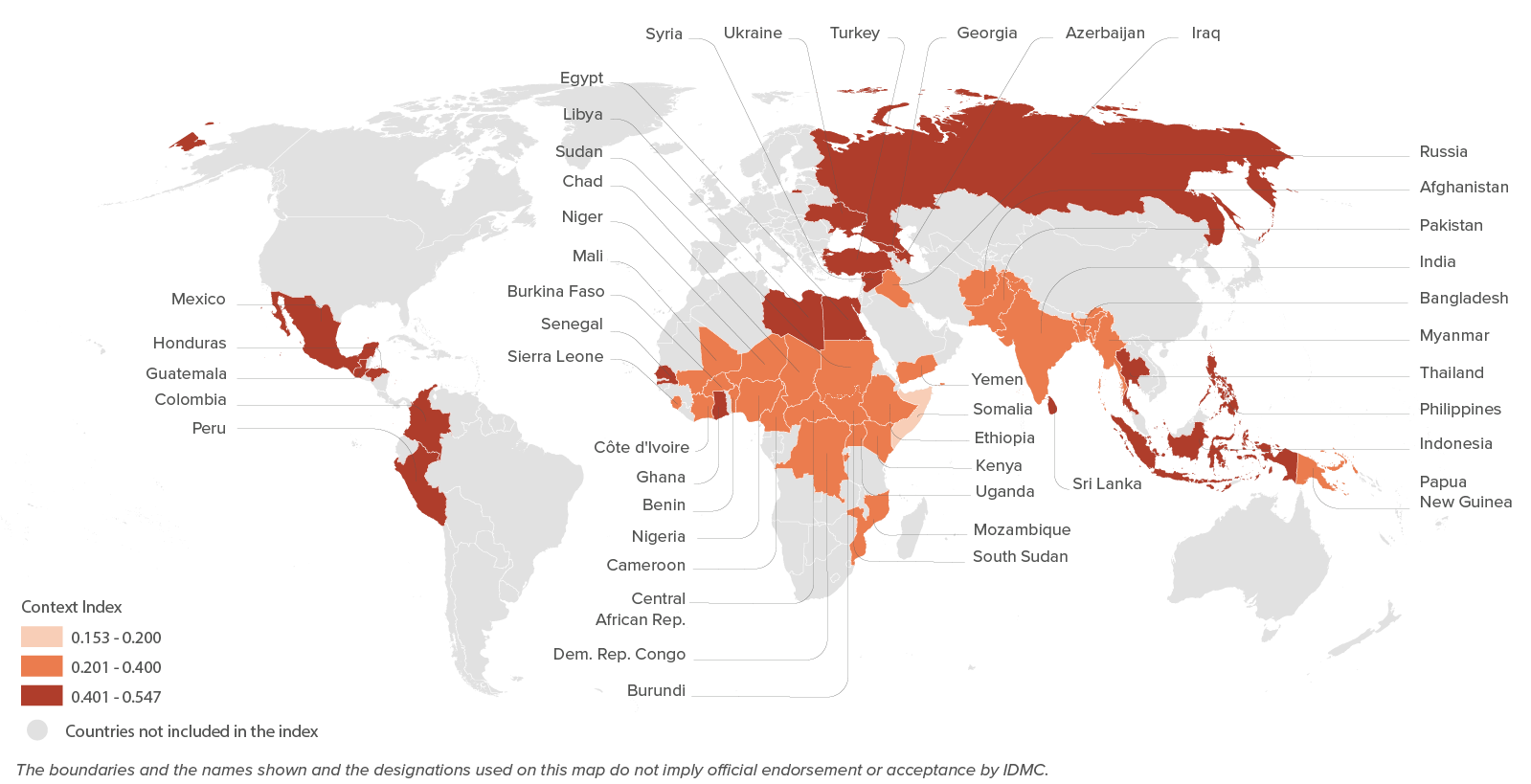

IDMC's first IDI report provided a baseline assessment at the end of 2019. This second report captures the global situation at the end of 2020 and shows that, while moderate progress has been recorded in some areas, significant progress is still to be made.
Hover over the map to compare overall IDI results for 2019 and 2020 in each country. Click on the tabs to explore the different results for; impacts of displacement, contextual factors, policies and capacities.




Challenging contexts persist around the world and, in the shadow of the Covid-19 pandemic, the number of IDPs has increased and the conditions in which they live have worsened. The root causes of displacement, including insecurity, disasters and the effects of climate change, and low levels of socioeconomic development continue to generate new displacement and aggravate existing crises.
Modest improvements in the quality of data on IDPs and the development of national policies to address the issue, however, provide hope that these investments will translate into better outcomes for IDPs in the future.

Progress on each of these categories is uneven across the world. Europe and Central Asia have the best results, followed by the Americas, East Asia and the Pacific, and South Asia. Sub-Saharan Africa and the Middle East and North Africa regions have results below the global average.

"Internal displacement is a complex phenomenon that cannot be assessed with numbers alone. The Internal Displacement Index allows us to identify shared challenges and promising practises, prioritise resources and ultimately achieve lasting solutions for displaced people."
Alexandra Bilak, Director IDMC
Detailed results for each category are now available for 46 countries. Explore the Internal Displacement Index below: